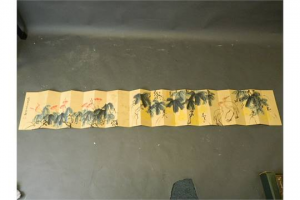The collage is a very particular form of art in that it is solely composed of other people’s work. Where the collage stands out is in the artist themselves. It is more about the idea that is being conveyed than the composition itself. This leaves more than enough room for interpretation about each piece. But regardless, questions are raised about where the materials that make up the piece come from. In terms of Max Ernst, he takes images of people, animals and mythical creatures, combining them all into dreamlike collages. But the way in which he does it creates a seamless composition that gives an almost lifelike quality to these fantasy images.
I enjoy how Ernst released “Une Semaine de Bonté” in multiple editions, each following a particular theme. It gives the viewer something to look for, as well as something to think on. These themes, such as water and a lion, give meaning and flow to the book as a whole. It seems as though these themes, while incorporating different dreamlike qualities, talk about different things. I feel as though I could spend hours looking at the collages from “Une Semaine de Bonté” and continuously find new meaning. Furthermore, what makes Ernst’s collages very unique is that, while they are seamless in terms of combining the different sources on the page, they are grainy and rough images to begin with. This sets the viewer apart from the image and makes them more surreal, even though the individual elements appear seamless. When it comes to creating dreamy collages, Ernst is extremely good.

